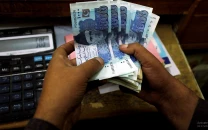Post-default Pakistan: a scenario
Biggest cost will be social unrest in context of income and wealth inequality

While it is unlikely that Pakistan would default on its debt, not due to the economic health and cost but rather the anticipated social and strategic backlash that the stakeholders are concerned with. However, in case of default, following is an anticipated scenario.
First day: It would be total standstill in the country except the national media running continuous news and analyses and international media carrying this as a major story. For the government, it would be an emergency situation and they would try to comprehend and manage the situation.
International development partners and donors would start working on their approach towards Pakistan, depending on the size of their respective debt or support.
First week: Markets and businesses, getting out of the temporary standstill, will start feeling the heat and facing the signals of this default and we will start seeing the indications of an economic meltdown in the form of business closures, job cuts, etc.
The government would try to manage this situation by controlling the perception in media and the opinions related to default. Contacts with lenders and other development partners will be initiated in order to calm them down.
Signs of social unrest may start appearing, mainly due to a disproportionate hike in prices, particularly of imported goods. Mismanagement or low stocks of petrol may exacerbate the chaos.
First month: It is quite likely that economic meltdown will start manifesting its impact with the cessation of imports, ban on development expenditure, reduction in essential public sector expenditure, business closures and huge layoffs from industrial and services sectors.
Due to uncertainty, many of the citizens would try to get their savings and investments out of the banking and financial system, and it would further exacerbate the situation, including the closure of some of the financial institutions.
On the governance side, there may be a new narrative to find an alternative government or governance model that could withstand such a situation. The incumbent government may not be able to manage the perception, social unrest and strategic positioning resulting from the default.
First quarter: The first quarter would be quite challenging in terms of assessing the magnitude of the loss that the economy would feel due to this default.
More importantly, economic pain and social unrest would be felt widely and provide an opportunity for some of the politicians to build upon this unrest and manifest their power through harnessing the negative sentiment and urging public uprising.
On the economic front, there will be a huge flight of capital, whatever would have been left. We would see an overbooking of flights towards Dubai and similar destinations with passengers fully utilising their allowance to carry foreign exchange. Prices would be out of control and the rupee would be depreciated considerably within the first quarter.
First year: GDP of Pakistan would shrink significantly. While some of the industries and services would resume their activities, import-dependent sectors would have to wait much longer. Due to a considerable hike in energy prices, the cost of production will go very high and unsustainable in many sectors.
Within first year, there could be change of government, or even governance model. It would be time to redraw the economic governance system without which it would be impossible to get out of the crisis.
International partners would probably start focusing back by seeing some of the possibilities and pathways to bail Pakistan out of such a crisis. However, this support would be with huge conditionalities, including from friendly countries. Renegotiations with donors and lenders for getting some lifeline would be almost one-sided with very little leeway for Pakistan.
First generation: This could be the first generation that would see the first debt default by Pakistan. It would face a serious consequence in terms of loss of trust and hope in the economic system and opportunities.
It would be particularly harmful for the youth who were ready to enter into the job market or the businesses or entrepreneurship. They would start looking beyond borders, resulting in yet another brain drain.
The only saving factor is that due to global economic slowdown, the usual destination markets for such brains may not be welcoming enough. In any case, it may not be out of place to say that we might see a lost generation due to this debt default crisis.
While the economic cost of default is quite significant, with right mitigation policies and recovery mechanisms, we might see some hope or light at the end of the tunnel to get back to normal in a few years.
However, the biggest cost or loss would be social unrest in the context of existing income and wealth inequality. This may lead towards a serious situation and become an internal security crisis. Given the situation on our borders, and hard-line forces already operating within the country, it may become much deeper and chaotic than one could anticipate.
Therefore, it is not just the economic cost of default that we need to pay attention to, it is also the social and internal security cost that we have to be ready for. Moreover, it would be not a short-term cost or phenomenon but quite long term and deep rooted, with slow and painful recovery.
In this context, I still believe that it is less likely that Pakistan would default as internal and external stakeholders anticipate this social and security costs, in addition to economic, and they would do their best to avoid such a scenario.
The writer is an international economist
Published in The Express Tribune, January 30th, 2023.
Like Business on Facebook, follow @TribuneBiz on Twitter to stay informed and join in the conversation.

1728020501-0/Express-Tribune-Web-(13)1728020501-0-208x130.webp)

















COMMENTS
Comments are moderated and generally will be posted if they are on-topic and not abusive.
For more information, please see our Comments FAQ